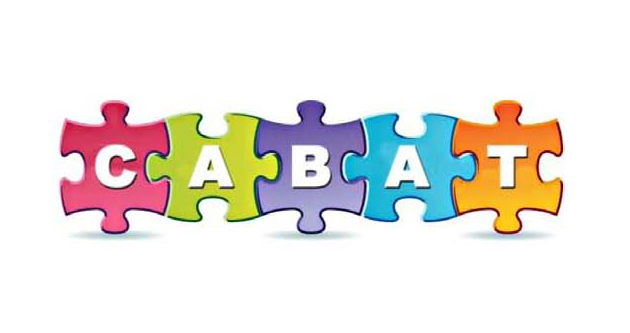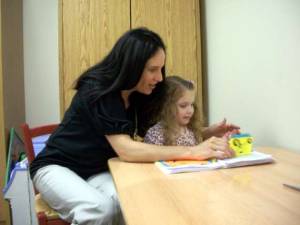Autism Spectrum Disorder (ASD)
Autism Spectrum Disorder (ASD) is a developmental disorder that appears in the first three years of life and affects a child’s development of social, emotional, and communication skills. Social communication deficits include impairments in aspects of joint attention, and social reciprocity, as well as challenges in the use of verbal and nonverbal communicative behaviors for social interaction.
View our other approaches:
- Apraxia of Speech (CAS)
- Articulation Disorders
- Auditory Processing Disorders (APD)
- Autism Spectrum Disorder (ASD)
- Deviate Swallow (Tongue Thrust)
- Executive Functions Deficits
- Expressive-Receptive Language Delays/Disorders
- Feeding Disorders
- Fluency (Stuttering)
- Oral Motor Disorders
- Phonological Disorders
- Social (Pragmatic) Communication
- Voice and Resonance Disorders
 Our treatment approach to Autism Spectrum Disorder is an intensive and comprehensive one that includes the child, parents and other caregivers, educators and therapists.
Our treatment approach to Autism Spectrum Disorder is an intensive and comprehensive one that includes the child, parents and other caregivers, educators and therapists.
Our treatment incorporates the philosophies and methodologies of the approaches currently recognized by the National Standards Project of the National Autism Center and are in accordance with the American Speech-Language and Hearing Association Preferred Practice Patterns.
Children treated at Suburban Speech Center have either been diagnosed with ASD or display speech-language challenges which may be indicative of autism, but have not received a definitive diagnosis.

The National Research Council recommends that, during the preschool years, children with autism should receive approximately 25 hours of structured intervention per week. Intervention can include speech-language, occupational and behavioral therapies. For school age children, intervention is often provided in a school program and may be supplemented by additional therapy after school and on weekends.
Verbal Behavior Analysis (VBA) is a language intervention strategy based on the principles of B.F. Skinner. Verbal behavior analysis has been applied effectively to develop a wide range of skills in learners with and without disabilities. Verbal behavior therapy uses Skinner’s functional analysis of language as a basis for teaching language and shaping behavior. A key component of verbal behavioral therapy is the importance placed on “using language” as opposed to ‘knowing language.’ VBA includes a strong family training component, as parents and other caregivers are encouraged to use verbal behavior principles throughout the child’s daily life.
The Developmental, Individual Differences, Relationship-Based model (DIR/Floortime) approach, developed by Drs. Stanley Greenspan and Serena Wieder, is a comprehensive framework for treating children with autism spectrum disorder. The goal of the DIR model is to help children master the ‘building blocks’ of relating, communicating, and thinking. Floortime, a centerpiece of the DIR approach, is a specific technique to both follow the child’s natural emotions and interests while challenging higher development. In DIR/Floortime the therapist gets on the floor to engage with the child at a level he/she enjoys, enters the child’s activity, and follows the child’s lead. The therapist guides the child toward increasingly more complex interactions, known as “opening and closing circles of communication.”
The Comprehensive ABA Treatment (CABAT) Program was developed by Suburban Speech Center and BehaviorWise to include a strong communication component to traditional ABA methodologies. Our CABAT program utilizes the principles of “traditional” applied behavioral analysis, while incorporating verbal behavior philosophies, to maximize a child’s ability to develop functional communication. (click here for more details)
The Affect-Based Language Curriculum (ABLC) is a systematic program that increases a child’s receptive-expressive and pragmatic language growth by incorporating affect and engagement as the foundations for communication development. The ABLC philosophy is to create an environment where the child is pleasurably engaged in an activity before he/she is taught a new skill. The ABLC program identifies communication and language skills or ‘capacities’ that should be mastered by a certain age. Therapy begins at the capacity that the child has not yet mastered and assists the child according to his/her unique developmental needs. The ABLC approach to communication development emphasizes meaningful interaction throughout all of its learning components.
The Social Communication/Emotional Regulation/Transactional Support (SCERTS) model of intervention was developed by Barry Prizant, Ph.D. and Amy Wetherby, Ph.D. to develop functional communication in children with autism. SCERTS emphasizes building a positive relationship with the child by having the therapist work with people in the child’s environment such as parents, caregivers, teachers and specialists. The SCERTS core domains include: Social Communication – development of spontaneous, functional communication, emotional expression and secure and trusting relationships with children and adults, Emotional Regulation – development of the ability to maintain a well-regulated emotional state to cope with everyday stress, and to be most available for learning and interacting, and Transactional Support – development and implementation of supports to help partners respond to the child’s needs and interests, modify and adapt the environment, and provide tools to enhance learning (e.g., picture communication, written schedules, and sensory supports).
Social Stories, developed by Carol Gray, was designed to teach children the social skills that they may find difficult to understand or are confusing. The objective of each simple, illustrated story is to increase the child’s understanding by describing in detail a specific situation and suggesting an appropriate social response.
Talkability, a Hanen Program, is for parents of verbal children with autism spectrum disorder. The program teaches parents practical ways to help their child learn people skills, such as “tuning in” to the feelings and thoughts of others by attending to nonverbal cues, such as body language, facial expressions, and tone of voice. The ability to consider the point of view of others and have empathy are considered essential for successful conversation and for making friends.
Literacy Intervention approaches incorporate a variety of instructional strategies to improve word decoding, word identification, reading fluency, reading vocabulary, and reading comprehension across a variety of materials and in a number of contexts. Depending on the child’s skill level, instructional strategies might include engaging in shared book reading, teaching literacy in natural contexts, labeling objects/pictures to promote sight word reading, reading and writing about personal experiences, promoting phonological awareness, and teaching the child how to monitor comprehension while reading.

At Suburban Speech Center, our comprehensive treatment approach is individualized to each child’s needs. Home carryover is an integral part of the program. Each child is provided with a speech notebook that contains age appropriate treatment objectives and interactive exercises.
Related Resource:
Caryn Mandel, MSW, LCSW
Behavioral and ABA Therapy Services
www.behaviorwise.net
973-921-0900
